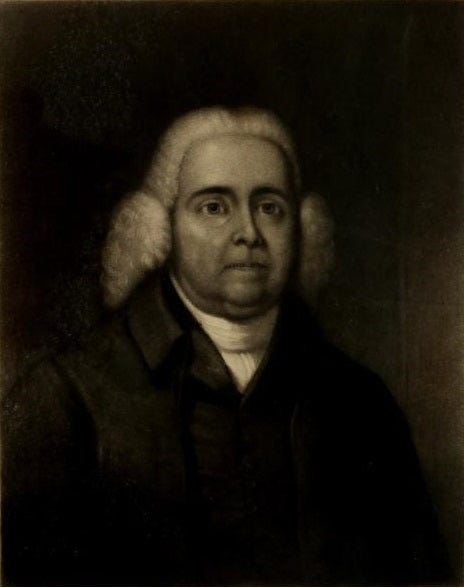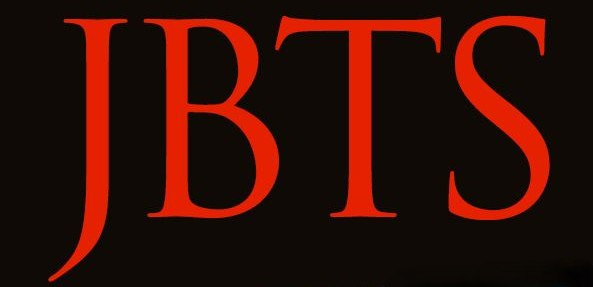This is the sixth and final part of a new article in the Journal of Biblical and Theological Studies (10.1, April 9, 2025). For the whole article, see: “The Puritan Roots of the American Baptist Movement”.
A further factor muddling the connection between the rise of Baptists in America and Puritans is a failure to understand the Great Awakening in America as a revival of Puritanism.[1]
The Great Awakening was not different in kind from the experiences of early Puritan growth in England and local revivals that had occasionally broken out in New England earlier, particularly under the ministry of Solomon Stoddard. As Richard Bushman notes, the Great Awakening “was merely the continuation of the tradition Stoddard represented.”[2] No less a keen observer and participant than Jonathan Edwards (1703-1758) insisted that the Awakening was the same in kind as the revivals Stoddard oversaw. Edwards asserted that the Awakening was carried out in a manner agreeable to Stoddard’s doctrine and it is “apparent to all to be the same work.”[3]
“Puritanismus Redivivus!” — Nehemiah Walter
When Nehemiah Walter (1663-1750), the successor to the original Puritan missionary John Eliot and Increase Mather’s son-in-law, heard the harbinger of the Great Awakening, George Whitefield, he declared, “Puritanismus redivivus”— Puritanism revived![4] That being the case, then, the subsequent, widely recognized explosion of Baptist growth following the Awakening is a product of a Puritan revival. It was not, as Kidd and Hankins implied, “de novo.”[5] The Baptist explosion out of the Great Awakening was from a Puritan soil with a revival of the Puritan spirit.
“The same logic that made Calvinistic Anglicans become Puritans, or Puritans become Separatists, also made Separatists become Baptists…”. — Thomas Nettles
One of the greatest long-term effects of the Awakening was the swelling of Baptist ranks in New England. Many Congregationalists, that is of “the standing order,” who embraced the Awakening became “Separates” — Congregationalists not part of the established system, eschewing the Halfway Covenant because of their revived conviction that only the regenerate should be church members. Many separates, then, reexamined baptism. They understood that if they continued to baptize their infants, in a generation they would face the same dilemma as the Halfway Covenant synod had nearly a century earlier.[6] Faced with the absence of direct Biblical command or example of the baptizing of infants, as many as half of the Puritan Separates eventually became Baptists.[7] Thomas Nettles notes, “The same logic that made Calvinistic Anglicans become Puritans, or Puritans become Separatists, also made Separatists become Baptists…”.[8]
Revived (i.e. “New Light”) Congregationalists often moved to the Baptists, bringing their Puritanism with them. C. C. Goen’s verifies how the Awakening fueled Baptist growth in two stages: first by creating new Baptist churches in the wake of the Awakening and then gradually assimilating many of the Separate churches into the Baptist fold.[9] These new Baptists are often called “Separate Baptist,” an unnecessary term, since all Baptists were separate from the established church, but one which serves to further prove the thesis of this article. These new Baptist churches were so much like the Separate ones, themselves Puritanismus redivivus, that the same modifier was used for both. Thus, New Light Puritans often became Separates and then Baptists. The result was a flood of new Baptist churches in the generation after the Awakening, over 90% of them sharing the Calvinism of the Puritans.[10]
The Awakening also spurred Baptists to spread to the other American colonies, especially the South which had been, up to that time, an Anglican stronghold.[11] The first Baptist missionaries came to Virginia from New England. Shubal Stearns (1706-1771) followed a typical pattern for new Baptists: first converted through the Awakening, becoming a Separate, then a Baptist. He pastored a Baptist church in Tolland, Connecticut before migrating south with his family and five other families first to Winchester, Virginia and finally settling in Sandy Creek, North Carolina in 1755.[12] He grew a Baptist church of more than 600 members, helping plant forty-two like-minded Baptist churches in North and South Carolina and Virginia and founding the Sandy Creek Baptist Association.[13] Baptists made up perhaps as much as 10% of the population of Virginia by 1772.[14]
Isaac Backus (1724 –1806) made a missionary trip to the South in 1789-90 taking his Puritan principles with him.[15] Overall, in fifty years after the Awakening, Baptists in America had increased by 375 percent.[16]
The Baptist missionaries arising from the Awakening had had their way prepared in the South by William Screven (c. 1629 – 1713). Screven had been ordained by the First Baptist Church of Boston. He gathered a Baptist church in Kittery, Maine, from which at least ten members transplanted to Charlestown, South Carolina, becoming the first Baptist church in the South. Their building, erected in 1701, was also called a “meetinghouse.” Upon his retirement as pastor in 1710, Screven admonished the congregation to obtain a new pastor who is “orthodox in faith, and of blameless life, and does own the confession of faith put forth by our brethren in London in 1689.” By 1750 Oliver Hart became pastor, a champion of the Awakening. He founded the Charlestown Baptist Association and demonstrated doctrinal continuity from New England Puritanism to the new Baptist churches in the South.[17] First Baptist Church of Charlestown, SC became “the mother church” of the Baptist movement in the South, producing Basil Manly, Jr. and James Boyce, two of the four founders of the Southern Baptist Theological Seminary.[18]
Although critical of the Puritan conception of church-state synergy and the meaning and mode of baptism, the New Light Baptists were essentially Puritans in every other respect. Isaac Backus, himself raised in a devout Puritan home, insisted that Baptists were good Puritans.[19] As a leading Baptist, Backus clung to “an undiluted Edwardsian theology” and the Puritan ideal of the church as the assembly of the regenerate, bolstered by careful church discipline.[20]
Conclusion
Thus ends, at about the founding of the United States, the origins of Baptists in America. Baptists are not “another religious tradition” distinct from Puritanism.[21] They are “Puritan Baptists.”[22] As such, they inherited nearly all of their traditional polity from Congregationalists, the Puritans who dominated New England. Just as Increase Mather could boast that his Puritans were “the children of the good old non-conformists,” so can we Baptists say that we are “children of the Puritans.”[23]
John B. Carpenter (Ph.D, ThM, MDiv) is pastor of Covenant Reformed Baptist Church and author of Seven Pillars of a Biblical Church.
[1] For example, Michael Haykin described George Whitefield, the leading voice of the Awakening, a “revived Puritan.” Michael A.G. Haykin, The Revived Puritan: The Spirituality of George Whitefield (Dundas, Ontario: 2000.)
[2] Richard L. Bushman, The Great Awakening: Documents on the Revival of Religion, 1740-1745 (Chapel Hill: University of North Carolina Press, 1969), 4.
[3] Edwards, The Distinguishing Marks of a Work of the Spirit of God (Boston: S. Kneeland, 1741), 125.
[4] George Whitefield, George Whitefield’s Journals (1740) (Carlyle, PA: Banner of Truth Trust, 1960), 461.
[5] Kidd and Hankins, Baptists in America, 29.
[6] William G. McLoughlin, Isaac Backus and the American Pietistic Tradition (Boston: Little, Brown, 1967), 63.
[7] William G. McLoughlin, New England Dissent, 1630-1833: The Baptists and the Separation of Church and State, Vol. 1 (Cambridge, MA: Harvard University Press, 1971), 424.
[8] Thomas J. Nettles, By His Grace and For His Glory: A Historical, Theological and Practical Study of the Doctrines of Grace in Baptist Life (Grand Rapid, MI: Baker Book House, 1986), 369.
[9] C. C. Goen, Revivalism and Separatism in New England, 1740-1800: Strict Congregationalists and Separate Baptists in the Great Awakening (Middletown, CN: Wesleyan University Press, 1987.)
[10] Kidd and Hankins, Baptists in America, 78. Edwin Gaustad, The Great Awakening in New England, 120-121. The following chart is based on data from McLoughlin: “In Massachusetts the number of Baptist churches doubled from ten in 1740 to twenty-one in 1760, almost doubled again to thirty-six in 1770, and again to sixty-six in 1780. In Connecticut the number of Baptist churches tripled from three in 1740, to ten in 1760, to seventeen in 1770, to thirty-three in 1780.” (New England Dissent, 425.)
[11] “Separate Baptists also fueled an unprecedented missionary campaign into the South,” (Kidd and Hankins, Baptists in America, 35.)
[12] Chute, Finn & Haykin, The Baptist Story, 78. Kidd and Hankins, Baptists in America, 33.
[13] Kidd and Hankins, Baptists in America, 33.
[14] Rys Isaac, The Transformation of Virginia: 1740-1790 (Chapel Hill: The University of North Carolina Press, 1982), 173.
[15] Grenz, 68.
[16] Chute, Finn & Haykin, The Baptist Story, 77.
[17] Thomas Nettles, “The Rise & Demise of Calvinism Among Southern Baptists,” Founders Journal, Issue 19/20 (Winter/Spring 1995), http://founders.org/site/wp-content/uploads/2016/10/FoundersJournal19-20.pdf, accessed March 6, 2022.
[18] Chute, Finn & Haykin, The Baptist Story, 54. First Baptist Church of Charlestown, SC, https://www.fbcharleston.org/_files/ugd/d87e21_a1868b527ce72ff6782aa5e3ae75fc0a.pdf.
[19] Grenz, 63-66.
[20] Nathan O. Hatch, The Democratization of American Christianity (New Haven: Yale University Press, 1989), 34.
[21] Contra Deweese, Baptist Church Covenants, 36.
[22] T. E. Watson, “Andrew Fuller’s Conflict With Hypercalvinism,” Puritan Papers, Vol. 1 1956-1959 (Philipsburg, NJ: P&R Publishing, 2000.)
[23] Original emphasis, An Earnest Exhortation to the Inhabitants of New England (Boston: John Foster, 1676), 21. James E. McGoldrick, Baptist Successionism: A Crucial Question in Baptist History (Metuchen, NJ: The Scarecrow Press, 1994), 124. Chute, Finn & Haykin, The Baptist Story, 14.








